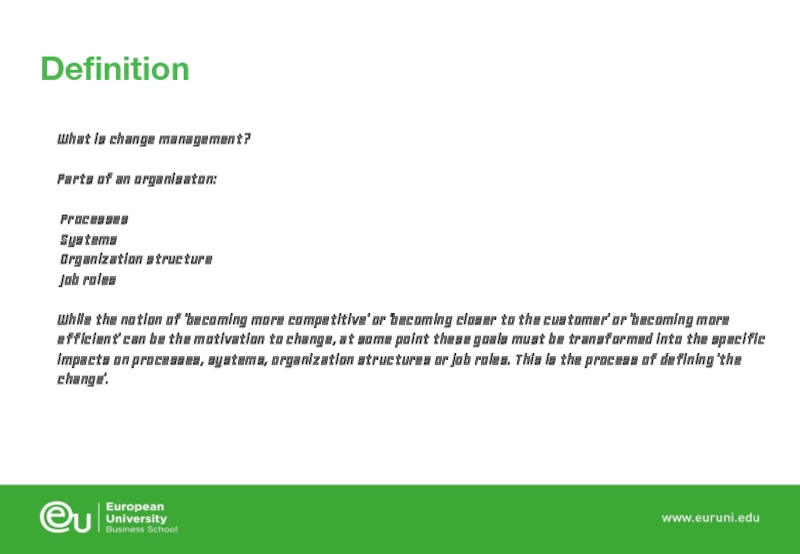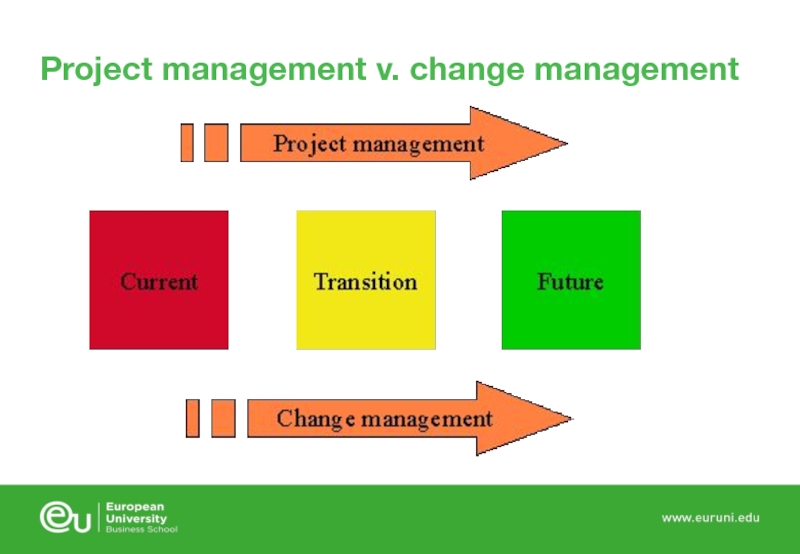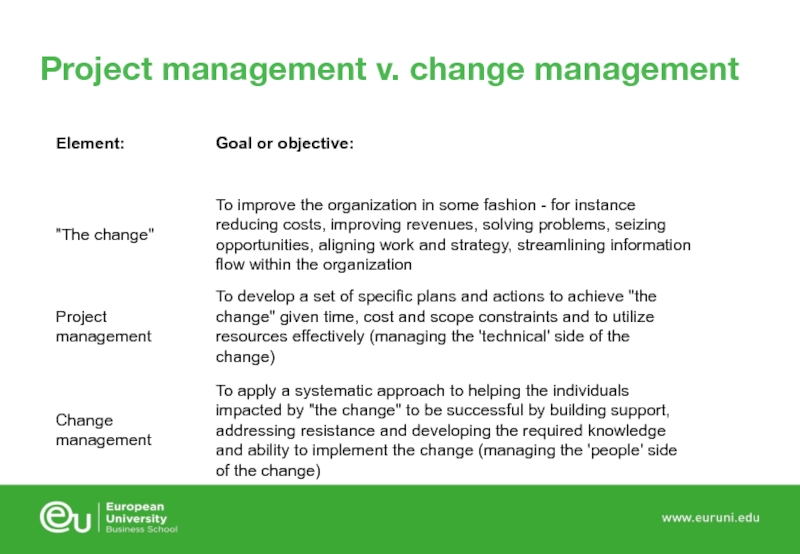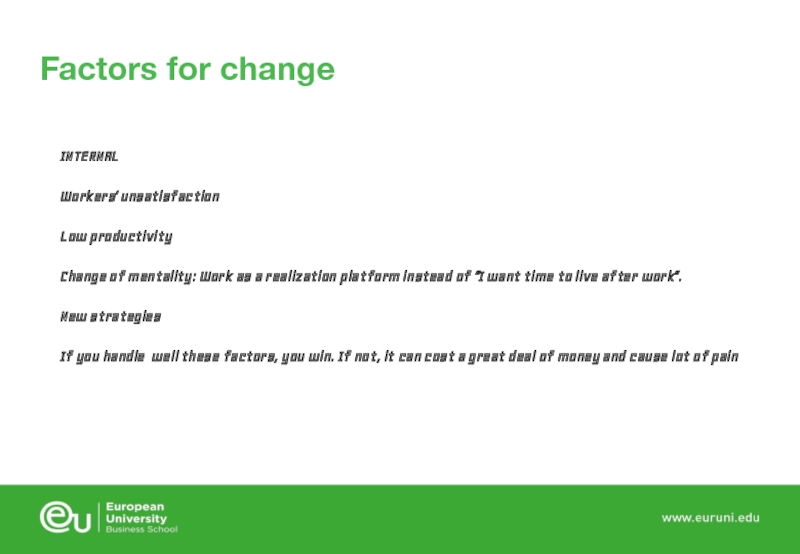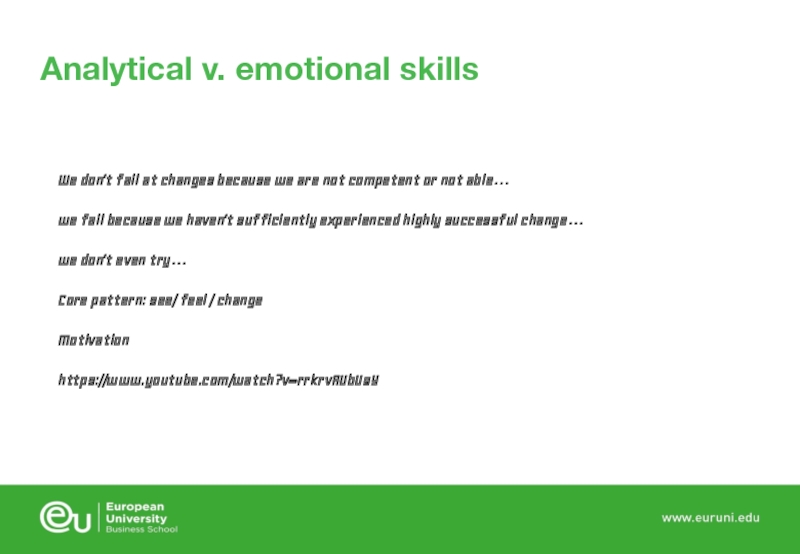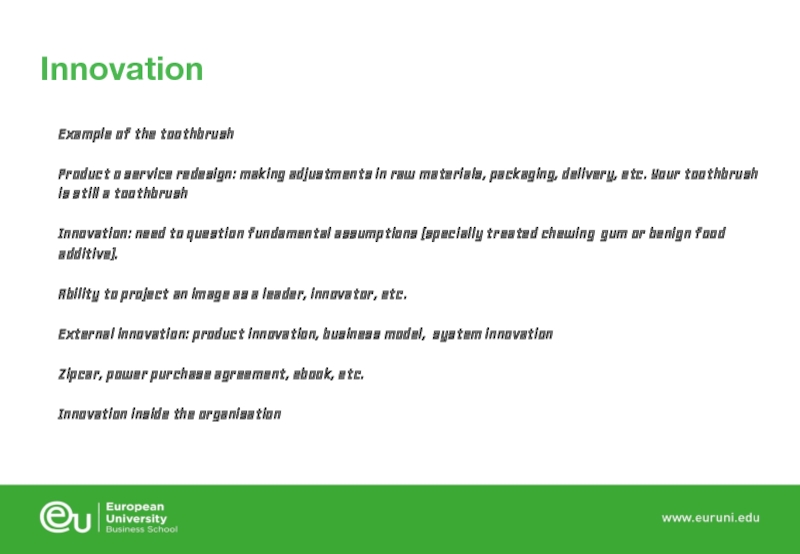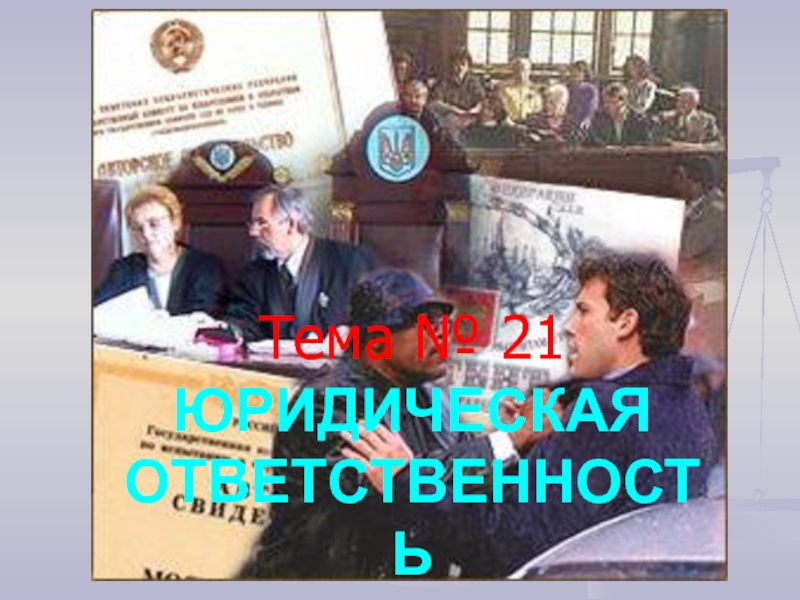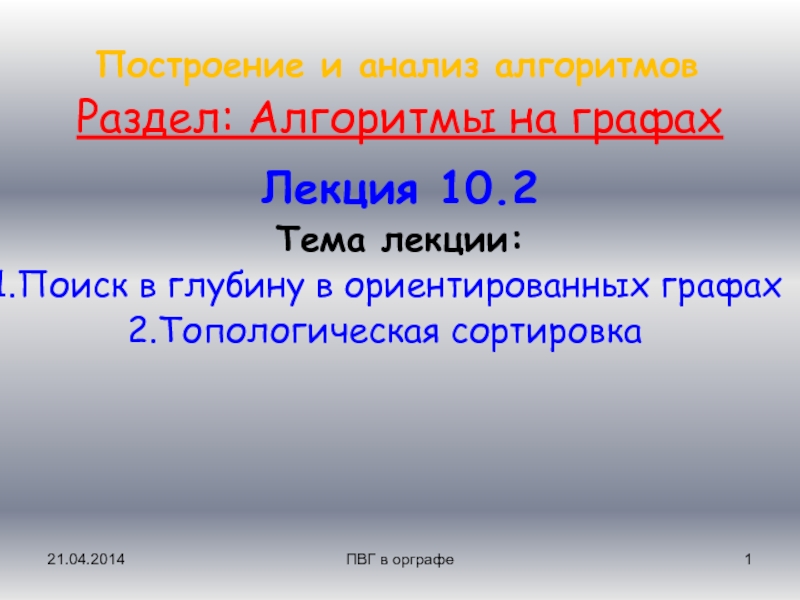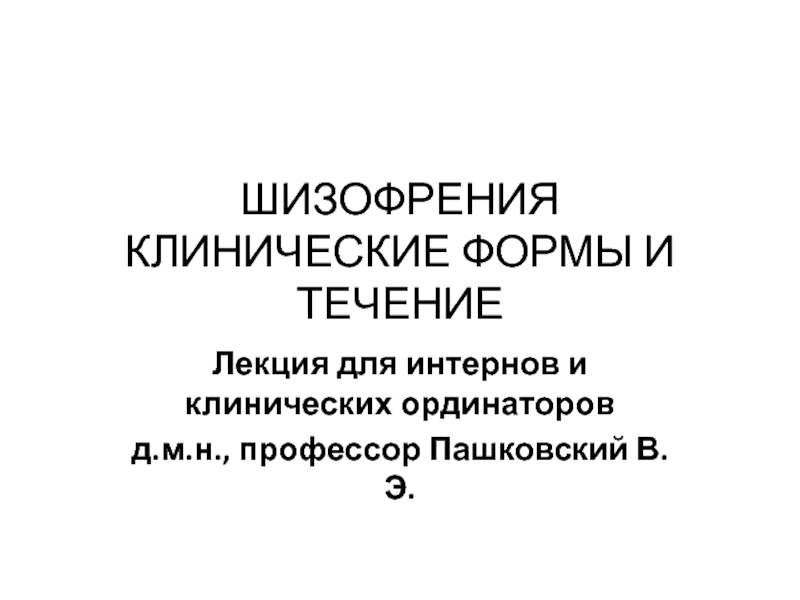Разделы презентаций
- Разное
- Английский язык
- Астрономия
- Алгебра
- Биология
- География
- Геометрия
- Детские презентации
- Информатика
- История
- Литература
- Математика
- Медицина
- Менеджмент
- Музыка
- МХК
- Немецкий язык
- ОБЖ
- Обществознание
- Окружающий мир
- Педагогика
- Русский язык
- Технология
- Физика
- Философия
- Химия
- Шаблоны, картинки для презентаций
- Экология
- Экономика
- Юриспруденция
CHANGE MANAGEMENT Introductory elements
Содержание
- 1. CHANGE MANAGEMENT Introductory elements
- 2. DefinitionWhat is change management?Parts of an organisaton:
- 3. Organisation as a systemIt is not only
- 4. Project management v. change managementProject management is
- 5. Project management v. change management
- 6. Project management v. change management
- 7. Activities for change management
- 8. Factors for changeEXTERNALNew technologiesMergers and acquisitions, restructuringsCultural transformationGlobalizationE-businessConsumer demands such as social and environmental issues
- 9. Factors for changeINTERNALWorkers’ unsatisfactionLow productivityChange of mentality:
- 10. Analytical v. emotional skillsCentral point: change people’s
- 11. Analytical v. emotional skillsWe don’t fail at
- 12. InnovationRadical change in human behavior needed to
- 13. InnovationExample of the toothbrushProduct o service redesign:
- 14. THANK YOU!
- 15. Скачать презентанцию
DefinitionWhat is change management?Parts of an organisaton: Processes Systems Organization structure Job rolesWhile the notion of 'becoming more competitive' or 'becoming closer to the customer' or 'becoming more efficient' can be
Слайды и текст этой презентации
Слайд 1CHANGE MANAGEMENT
Introductory elements
Barcelona, October, 2015
Francesc Cots
Professor of Change Management
Слайд 2Definition
What is change management?
Parts of an organisaton:
Processes
Systems
Organization
structure
'becoming closer to the customer' or 'becoming more efficient' can be the motivation to change, at some point these goals must be transformed into the specific impacts on processes, systems, organization structures or job roles. This is the process of defining 'the change'.Слайд 3Organisation as a system
It is not only the sum of
the parts
In fact, the organisation intelligence may be superior, inferior
or the same than the sum of its members. If the team learns evolution will be faster with better results that separately.
The essence of team learning is personal domain and shared vision. It is a permanent process.
creating change within an organization takes hard work and structure around what must actually take place to make the change happen
Слайд 4Project management v. change management
Project management is the application of
knowledge, skills, tools and techniques to project activities to meet project requirements.
Application and integration of the project management processes of initiating, planning, executing, monitoring and controlling, and closing.Change management is the process, tools and techniques to manage the people-side of change to achieve the required business outcome.Change management incorporates the organizational tools that can be utilized to help individuals make successful personal transitions resulting in the adoption and realization of change.
Project management focuses on the tasks to achieve the project requirements. Change management focuses on the people impacted by the change.
Слайд 8Factors for change
EXTERNAL
New technologies
Mergers and acquisitions, restructurings
Cultural transformation
Globalization
E-business
Consumer demands such
as social and environmental issues
Слайд 9Factors for change
INTERNAL
Workers’ unsatisfaction
Low productivity
Change of mentality: Work as a
realization platform instead of “I want time to live after
work”.New strategies
If you handle well these factors, you win. If not, it can cost a great deal of money and cause lot of pain
Слайд 10Analytical v. emotional skills
Central point: change people’s behaviour
The heart of
change is in the emotions, not in the thinking, analysis,
etc.Frustration, fear, anger, resentment, ignoring how the world is changing…can be overcomed in the realm of feelings, not analysis
Limitations of analysis
You don’t need analysis to find big truths
In a turbulent and uncertain world…
It does not motivate people
Слайд 11Analytical v. emotional skills
We don’t fail at changes because we
are not competent or not able…
we fail because we haven’t
sufficiently experienced highly successful change…we don’t even try…
Core pattern: see/ feel / change
Motivation
https://www.youtube.com/watch?v=rrkrvAUbU9Y
Слайд 12Innovation
Radical change in human behavior needed to face current challenges
(economic, personal, environmental, organisational, etc)
Innovation is one way
Innovating at
the concept stage, or developing new products and services capable of performing the same function than existing ones with significant less resources, or with significant greater satisfaction for the consumerIncremental v. radical
It is an opportunity for business
Слайд 13Innovation
Example of the toothbrush
Product o service redesign: making adjustments in
raw materials, packaging, delivery, etc. Your toothbrush is still a
toothbrushInnovation: need to question fundamental assumptions (specially treated chewing gum or benign food additive).
Ability to project an image as a leader, innovator, etc.
External innovation: product innovation, business model, system innovation
Zipcar, power purchase agreement, ebook, etc.
Innovation inside the organisation

